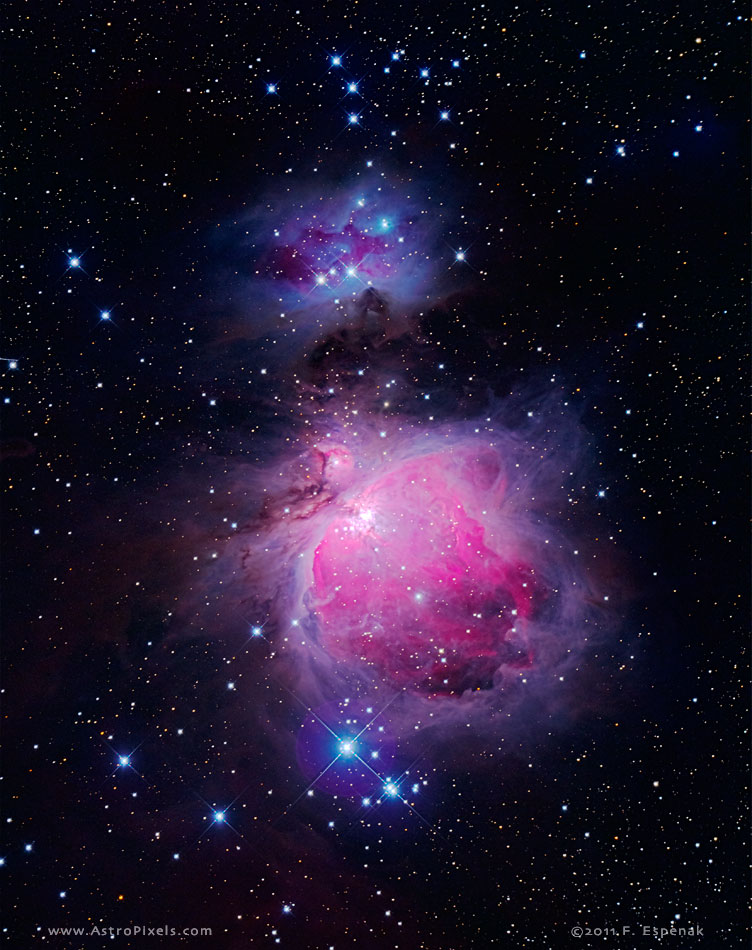Great Nebula in Orion - M42
M42, the Great Nebula in Orion is a complex region of active star formation where some of the hottest and brightest stars are coalescing. Composed of glowing gas and dark dust, this nebula is part of the much larger Orion Molecular Cloud Complex that also includes Horsehead Nebula located south of Zeta Orionis (Alnitak), the easternmost star in the Belt of Orion.
The red glow visible in the Orion Great Nebula is characteristic of ionized hydrogen as it recombines with lost electrons. Embedded deep in the nebula is the Trapezium - a tight group of four of the brightest stars in M42. The Trapezium can be seen in a small telescope but the Great Nebula is visible to the naked eye as a fuzzy patch and has an integrated apparent visual magnitude of +4.0. The Great Nebula lies in the Orion Arm of the Milky Way Galaxy about 1600 light years away and is ~24 light years in diameter.
Just to the north of M42 is M43, a teardrop shaped emission nebula that appears separated from M42 by a dark dust lane in the foreground. However, M43 is physically part of the Great Nebula.
The blue nebula above the Great Nebula is an interstellar cloud of dust reflecting light from hot young stars. It is composed of three regions known as NGC 1977, NGC 1975, and NGC 1973. Physically associated with the Great Nebula, it lies at approximately the same distance.
The image above shows the uncropped view of M42 (and M43) through the Takahashi E-180 Astrograph (North is up). A 2x enlargement of this image appears to the right.
Technical Details
- Object: Great Nebula in Orion
- Object Type: Emission Nebulae (and Reflection Nebulae)
- Other Names (Red Emission Nebulae): M42 (NGC 1976, Sharpless 281) and M43 (NGC 1982)
- Other Names (Blue Reflection Nebulae): NGC 1977, NGC 1975, and NGC 1973
- Date/Time: 2011 Feb 05 at 04:08 UTC
- Location: Bifrost Astronomical Observatory, Portal, AZ
- Telescope: Takahashi Epsilon 180 ED Hyperbolic Astrograph
- Mount: Astro-Physics 1200GTO
- Camera: Canon EOS 550D (Rebel T2i) (modified with a Baader UV/IR filter)
- Exposure: HDR sequence: 3s, 7s, 15s, 30s, 60s, 120s, 300s at f/2.8, ISO 800
- File Name: M42-02-TMAPw.jpg
- Processing: HDR composite of 7 exposures, Curves, Noise Reduction, Unsharp Mask (Photoshop CS5)
- Original Image Size: 3454 × 5179 pixels (17.9 MP); 11.5" x 17.3" @ 300 dpi
- Rights: Copyright 2011 by Fred Espenak. All Rights Reserved. See: Image Licensing.
